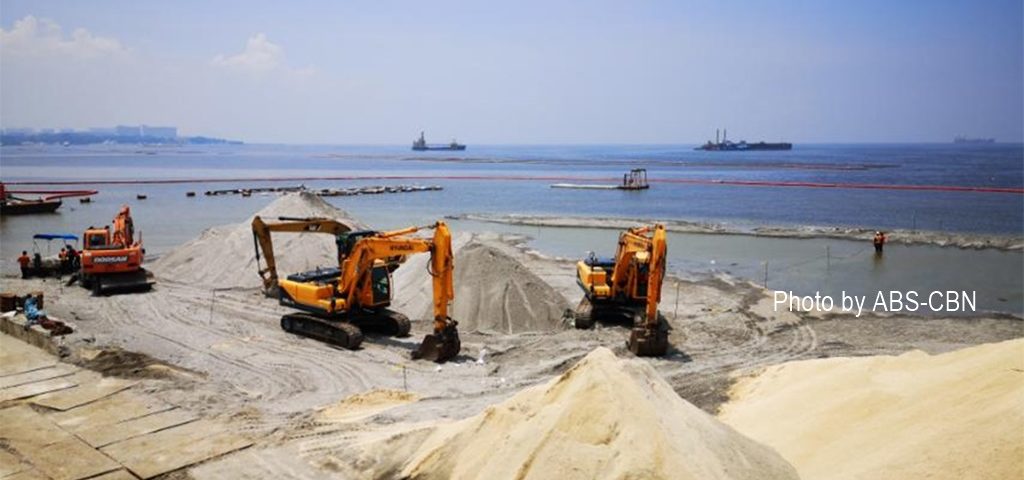Dolomite boulders harmful to environment, humans – fishers and environmental groups
Manila, Philippines — The national fishers group Pambansang Lakas ng Kilusang Mamamalakaya ng Pilipinas (PAMALAKAYA) on Friday warned of the potential negative impacts of the dolomite boulders to the marine ecosystem and fishery resources of Manila Bay, as well as to humans.
In a statement, the fishers group said that dolomite contains high amount of heavy metals such as aluminum, lead, and mercury, which would contribute to the pollution and acidity of Manila Bay.
“One of the objectives of Manila Bay rehabilitation is to decrease the amount of its heavy metal. Then why is the DENR, which leads the rehabilitation campaign, filling dolomite boulders that would increase and further the harmful chemical element?” Fernando Hicap, PAMALAKAYA National Chairperson said in a statement.
PAMALAKAYA said that toxic heavy metals, which were found in Manila Bay’s sediment samples before, are detrimental to the environment. Human exposure to the heavy metals, could also lead to chronic and acute health effects.
“These synthetic materials can easily contaminate Manila Bay when a heavy rainfall washes them away from the shore, tainting the already polluted water and endangering the fishery resources,” Hicap added.
For its part, youth environmental group Wavefarers also slammed the “white-sanding” of Manila Bay as “unsustainable solution” to the environmental problems besetting the historic body of water. They also questioned the government’s undertaking “without the benefit of a scientific opinion”.
“This is not the first time the government has carried out projects that neglect the environment and ignore science. The visual appeal of Manila Bay will mean nothing if the bay’s ecosystems and communities continue to get destroyed by negligent operations,” said Charisse Reganion, Executive Director of Wavefarers.
Instead of trying to “embellish” Manila Bay, the Wavefarers added, the government should focus its time and resources on restoring the local ecosystems and tackling the root causes of its problems.
“For instance, mangrove rehabilitation can help restore the bay because mangrove trees are known to filter and store metals, which help keep coastal waters clean and safe for humans and other species. Complex mangrove forests, seagrass beds, and coral reefs form protective barriers from wind and water. These ecosystems are also carbon sinks and are important in conserving biodiversity. In conserving Manila Bay and all other environments, DENR must be conscious of actual long-term impacts and not superficial fixes. We do not need another Boracay. We need a healthy rehabilitated Manila Bay, for the environment and the people,” Reganion added.
PAMALAKAYA and Wavefarers are working on a campaign against massive reclamation activities across Manila Bay, and for the protection of fishing communities against displacement and conversion projects.
“The fishing people of Manila Bay don’t need synthetic white sand, but authentic rehabilitation that would restore its abundant ecosystems and fishing resources for the benefit of the Filipinos,” PAMALAKAYA and Wavefarers said in a joint statement. ###
